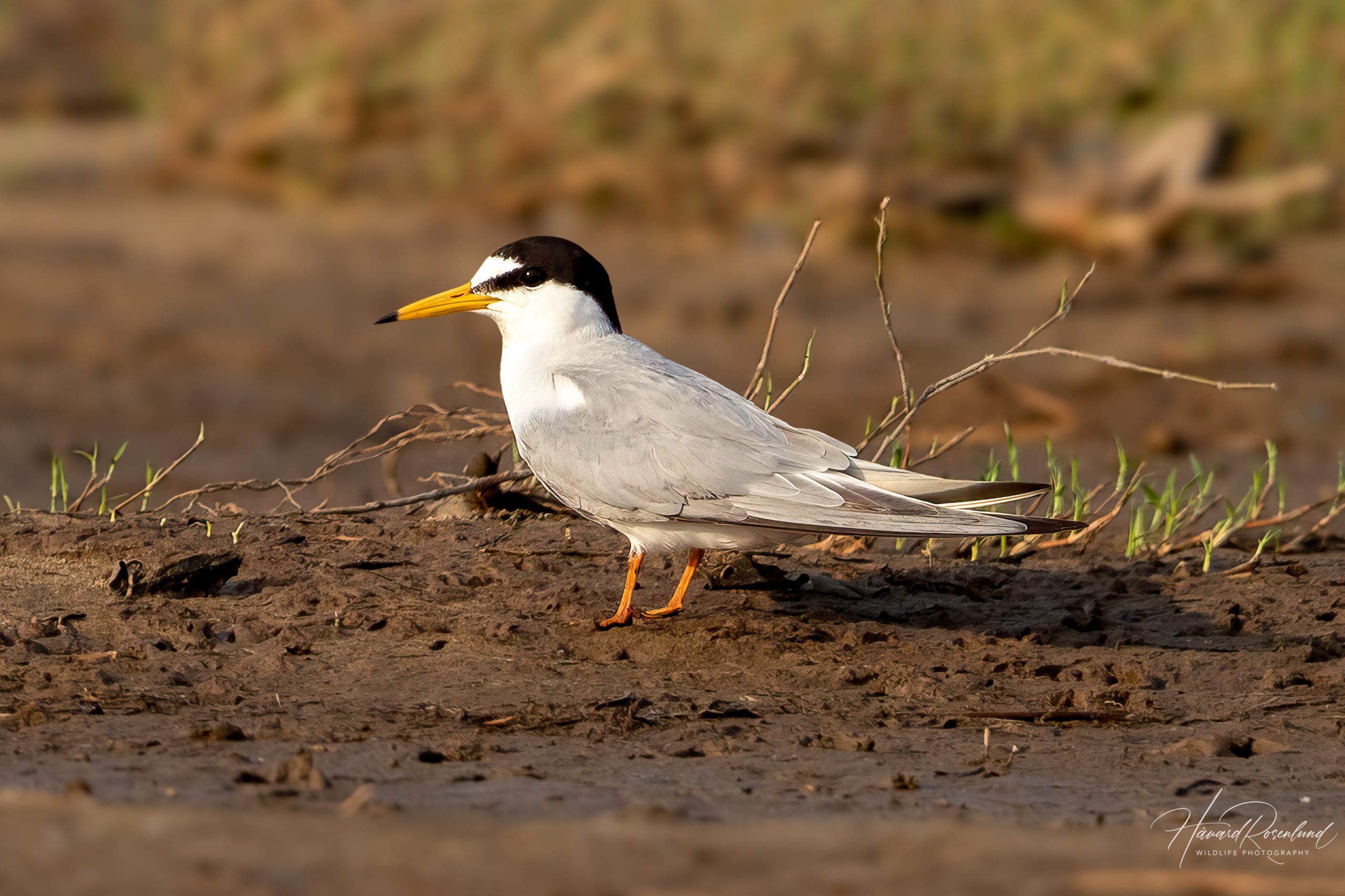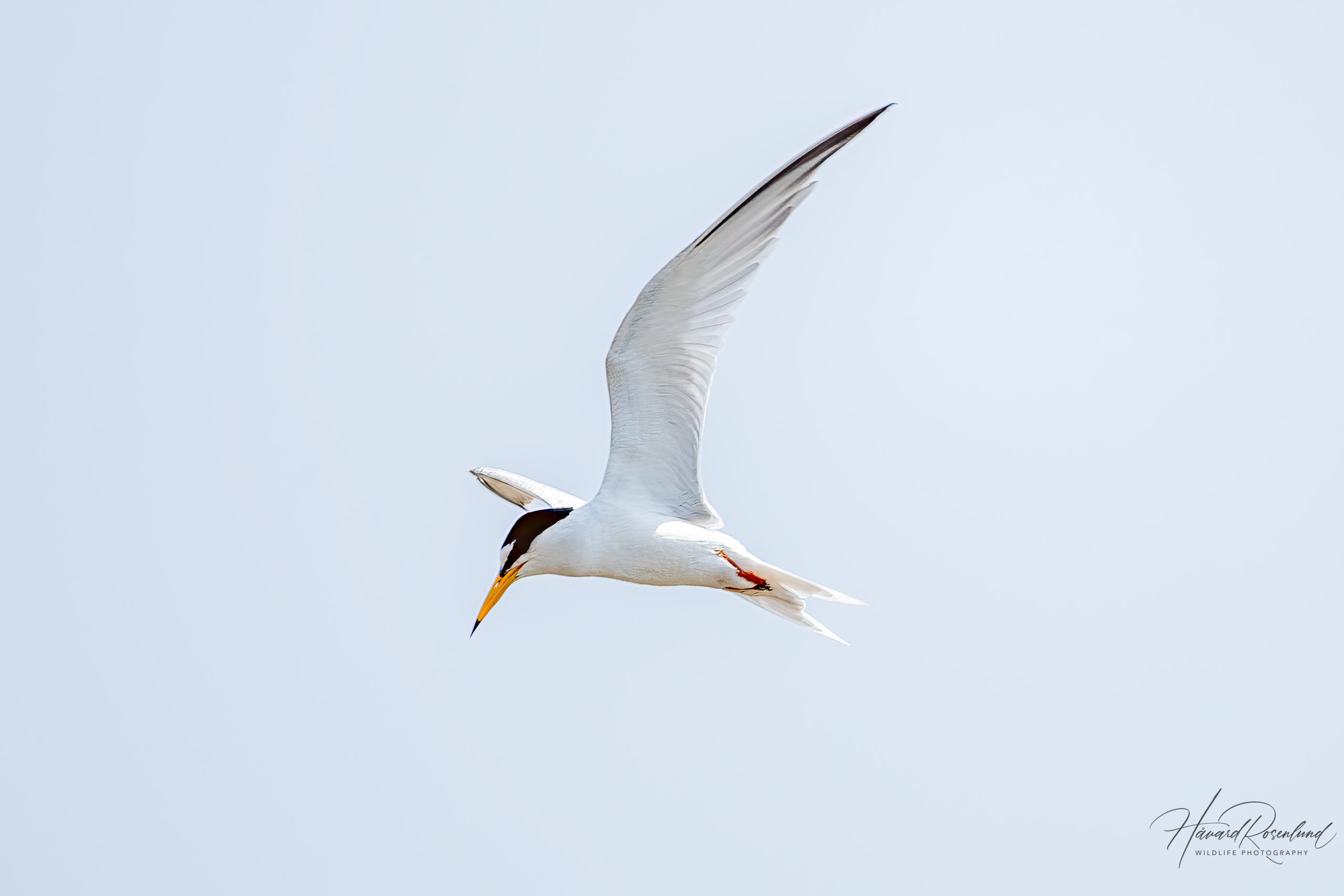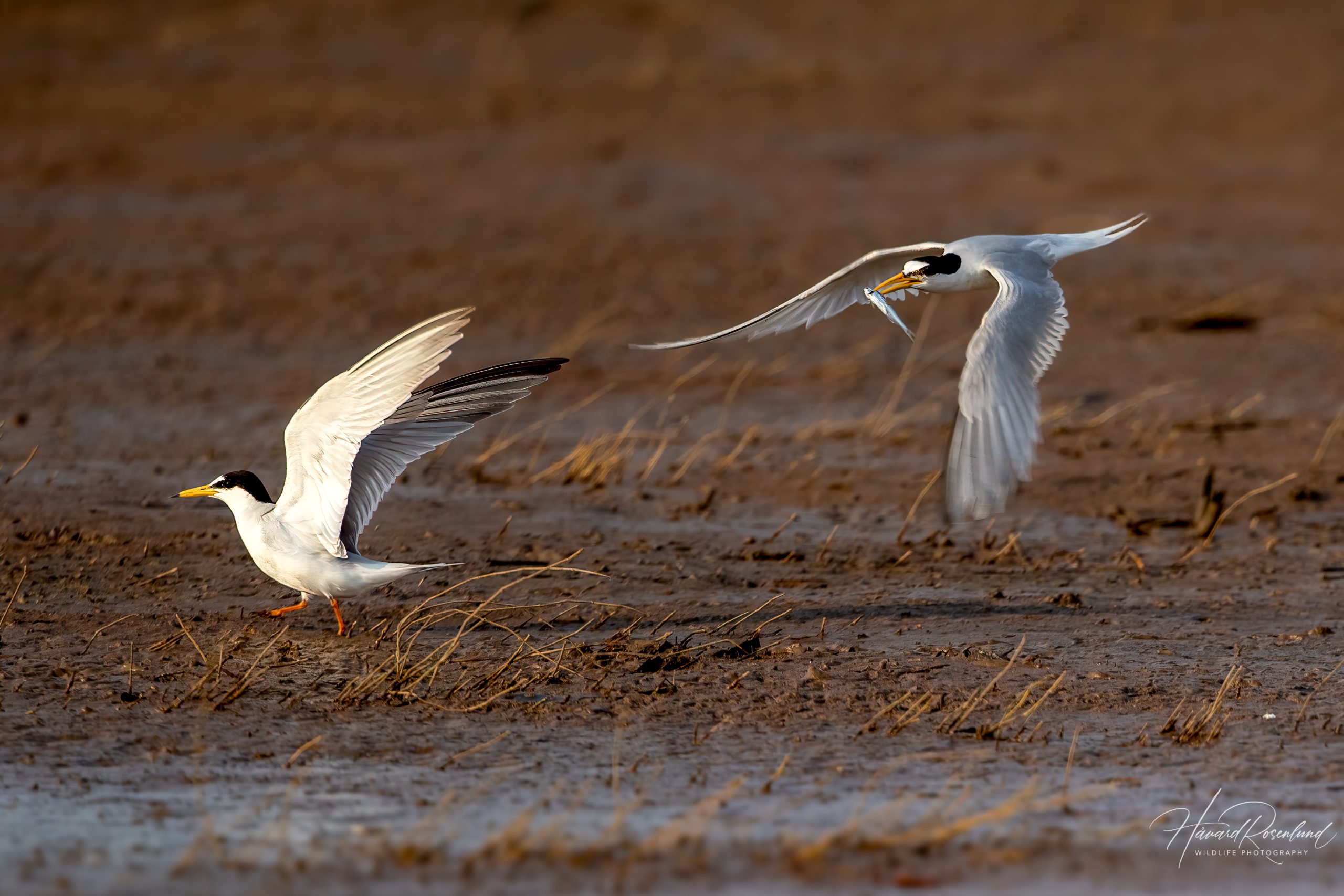Description
The little tern (Sternula albifrons) is a small, slender seabird widely distributed across coastal regions of Europe, Asia, and Australia. During breeding season, it is found along coastlines, estuaries, and river mouths, while in the non-breeding season, it migrates to tropical and subtropical coastal areas. It is characterized by its white forehead, black cap, and yellow bill tipped with black. It measures approximately 22-28 cm (9-11 in) in length with a wingspan of 47-55 cm (18.5-21.5 in), making it one of the smallest terns. The species has a light grey upper body and white underparts, with sharp, pointed wings and a deeply forked tail. Its legs are a bright orange-yellow.
One key distinction between the little tern and its close relative, the Saunders’s tern (Sternula saundersi), is the shape of the forehead patch. Saunders’s tern has a more extensive black cap with a straighter line, and the white does not extend past its eyes, which it does on the little tern. The Saunders’s tern is also paler grey on its upperparts and has more greenish-yellow legs.
Diet & habitat
The little tern primarily inhabits coastal areas, favoring sandy beaches, estuaries, and river mouths. It is also known to frequent inland bodies of water such as lakes and reservoirs, especially during migration periods. This species feeds mainly on small fish, which it catches by diving from the air into the water. The little tern typically hunts in shallow waters, often hovering above the surface before making its rapid plunge to seize its prey. In addition to fish, it also consumes crustaceans and insects, particularly when fish are less abundant.
Behavior
The little tern is a social bird, often seen in small flocks, especially during migration and in its breeding colonies. Despite its delicate appearance, it is a highly agile and skilled flyer, capable of swift maneuvers while hunting. This species is also known for its distinctive calls, which are sharp and high-pitched, often described as a “kik-kik” sound. During the breeding season, little terns are territorial and can become quite aggressive, defending their nesting sites against intruders, including larger birds and humans.
Migration
The little tern is a migratory species, with populations in Europe and Asia traveling considerable distances to wintering grounds in coastal areas of Africa, South Asia, and Australasia. Migration typically begins in late summer after the breeding season, with birds returning to their breeding sites in spring. These migrations can cover thousands of kilometers, showcasing the species’ remarkable endurance and navigational abilities.
Nesting
The breeding season of the little tern typically occurs between April and July, depending on the region. These birds are colonial nesters, often forming loose colonies on sandy or gravelly shores, where they lay their eggs in simple scrapes in the ground. A typical clutch consists of 1 to 3 eggs, which are well-camouflaged against the substrate. Both parents participate in incubation, which lasts around 20 to 22 days. After hatching, the chicks are semi-precocial, meaning they are relatively mature and mobile but still require parental care. They fledge about 19 to 25 days after hatching, during which time they are fed by both parents.
Status
The little tern is currently listed as least concern by the IUCN, but its populations are subject to threats that are believed to be impacting their numbers. Habitat loss due to coastal development, human disturbance at nesting sites, and predation by invasive species are some of the key factors affecting this species. Conservation efforts in some regions include habitat protection and management, as well as public awareness campaigns to reduce human impact during the breeding season.









